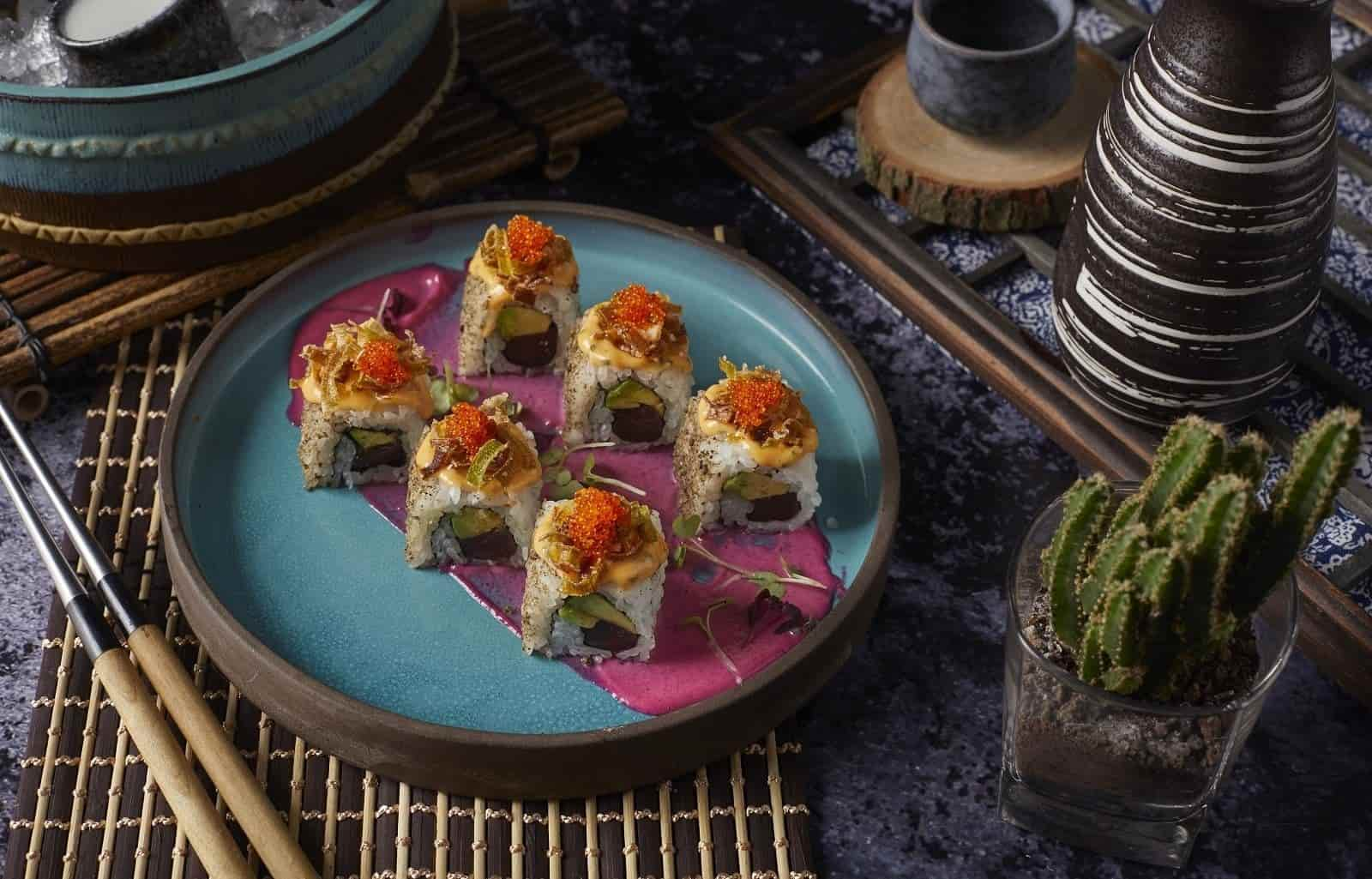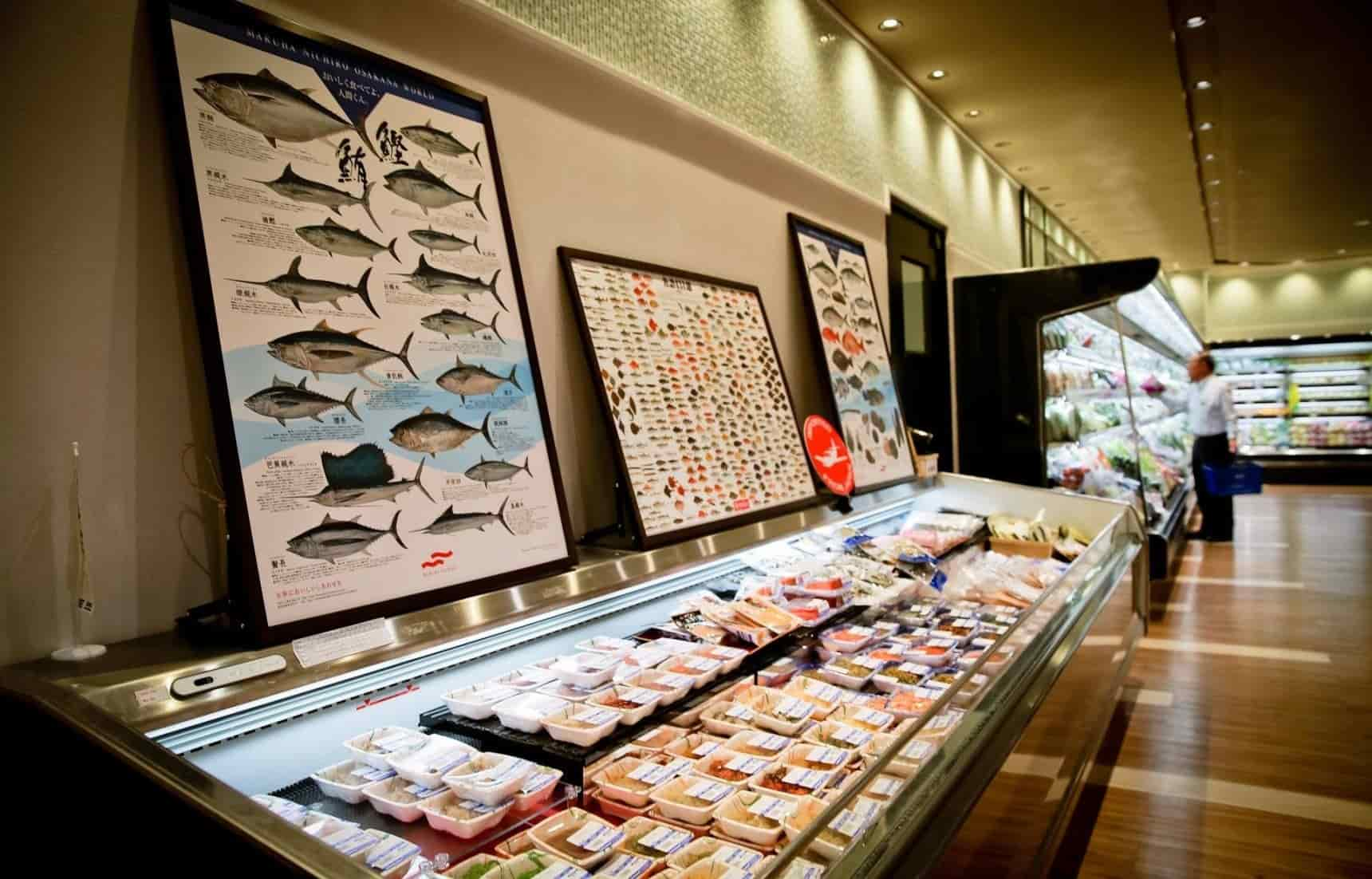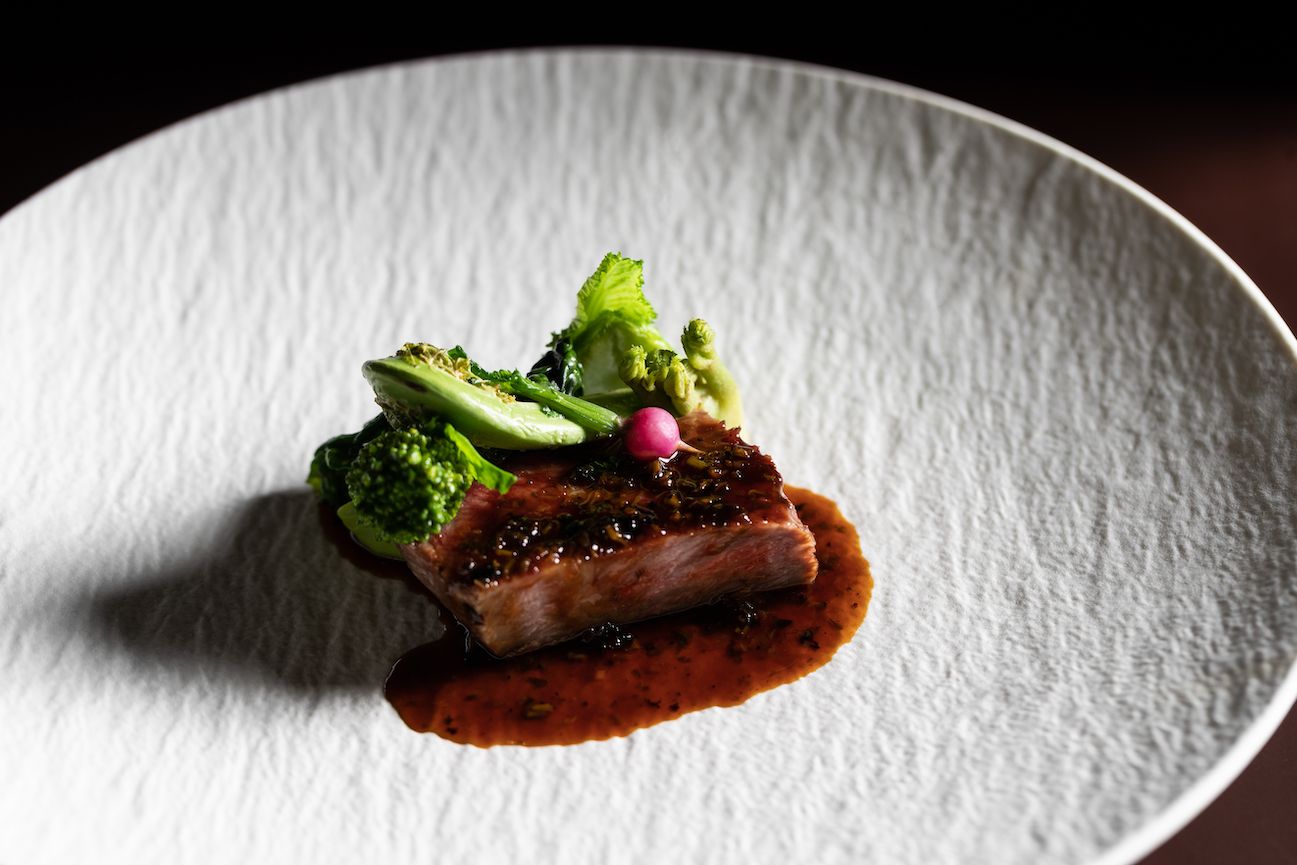
A reinterpretation of charcoal-grilling discovered by Argentinian chef fascinated by Kaiseki cuisine and the Japanese sentiment with Spanish influences
From Argentina to Japan, and onto Hong Kong. “ANDO”, led by passionate young chef from the other side of the world, Mr. Agustin Ferrando Balbi, does not have a sign saying Japanese cuisine, but is a noted restaurant regularly using Japan-produced ingredients to create unique dishes with a deep understanding and application of Japanese course cuisine, seasonal philosophy and a spirit of hospitality. I went in search of the technique and charm of his own style of charcoal-grilling borrowing from the method of “charcoal-grilling” increasingly gaining popularity in Hong Kong at present.
ANDO was opened in July 2020 in the heart of Hong Kong, Central. In continuation from last year, the restaurant was continuously awarded with One Michelin Star in the recently published “Michelin Guide Hong Kong Macau 2022”.
ANDO’s owner chef is Argentinian-born chef, Mr. Agustin Ferrando Balbi. For Mr. Balbi, who has been active as executive chef of two popular restaurants in Hong Kong since 2016, ANDO is the first time he has made his own restaurant a reality.
“ANDO is not a Japanese restaurant. I serve unique dishes born from a core of Spanish cuisine, my base having been brought up in a Spanish-Argentinian family, and Japanese cuisine which has impressed deeply on my identity as a chef in my cooking career.”
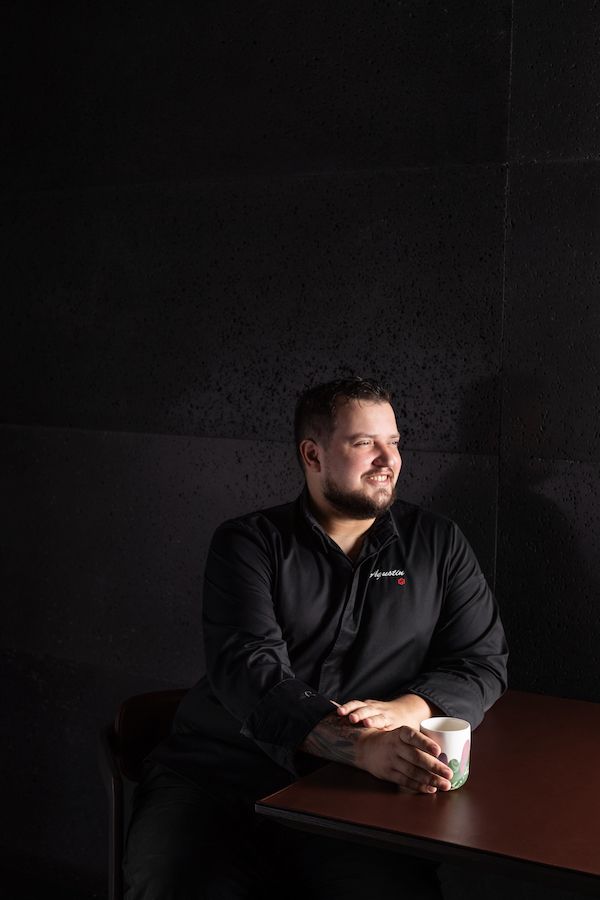
Argentinian-born owner chef, Mr. Agustin Ferrando Balbi. He speaks fluently in the Japanese he mastered “in order for my own survival as the only foreigner in the kitchen” during his training in Japan.
He says that ANDO has both the meanings of the English “-ing” in Spanish, and “solace” in Japanese, and aims for a restaurant that, although it never stops innovating, it is there for simply enjoying food. Mr. Balbi decided, “I’m going to be a Michelin chef in the future” at the age of 19, and became an apprentice chef at a famous Japanese-style restaurant in Buenos Aires, which began his interest in fish dishes and Japanese cuisine.
“Argentina has a dominant meat-eating culture with hardly any fish dishes, and many young chefs aim for Europe. I believe that doing things differently from other people is the strength of a chef, and decided to learn about fish in Japan”.
After being employed at top French restaurants such as “Troisgros” in Japan, he had an opportunity to learn at “Nihonryori Ryugin” where he became fascinated by the profoundness of Japanese cuisine, particularly the Kaiseki course cuisine philosophy and high-quality ingredients. Later on, he was invited to take up a post as the first executive chef of a newly opened seafood restaurant, and for that he moved to Hong Kong. Before opening ANDO, he worked as executive chef at the Japanese restaurant “HAKU” overseen by chef Hideaki Matsuo (Goodwill Ambassador for Japanese Cuisine) of Osaka’s three-star restaurant “Nihon Ryori KASHIWAYA Osaka Senriyama”. There he had the opportunity to learn more deeply about Kaiseki course cuisine.
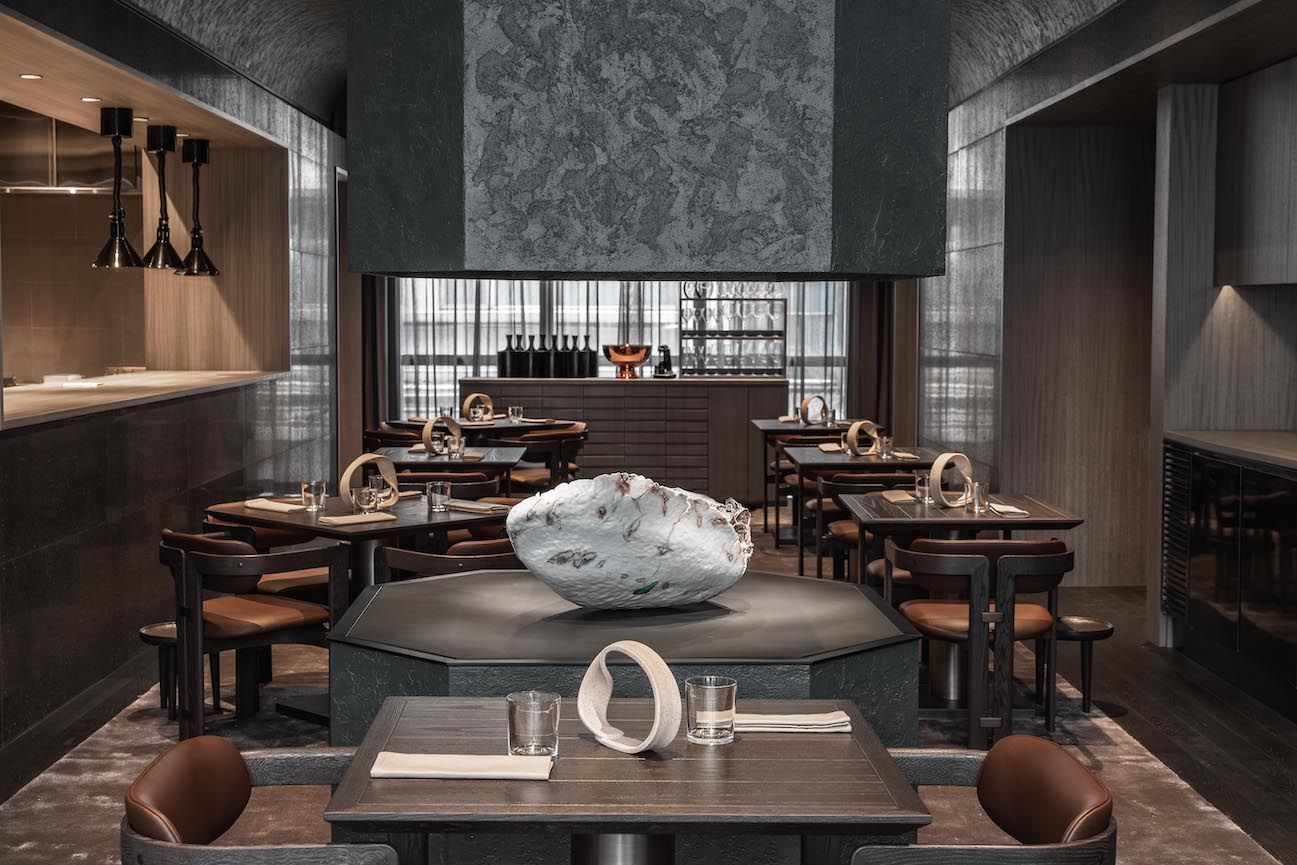
The interior is calm, allowing you to completely forget the noise of bustling Central. Guests can immerse themselves in food and conversation.
Hong Kong is a city of food where cuisine and chefs from around the world, and guests with discerning tastes. Japanese food has been the most popular here particularly over the last several years, with over 3000 Japanese restaurants packed in. It is noteworthy that the restaurants among them continuing to open offer Japanese charcoal-grilling such as yakitori grilled chicken and robatayaki barbeque-style grills.
Mr. Balbi, who had mastered charcoal-grilling Japanese style during his time at “HAKU”, was the quickest to take a lead in the charcoal-grilling boom. “In Argentina, “Asado” is an important food culture of a hearty whole roast done outside using wood. I was impressed by Japanese charcoal-grilling because cutting it up small to push onto the skewer means you can make tiny adjustments to the grilling by moving the meat around freely. I thought I would try adding an Asado-like smokey flavor to the Japanese charcoal-grilling method, and sprinkled cherry woodchips onto the charcoal”.
From the time he lights the fire, Mr. Balbi makes adjustments so that the charcoal temperature gradually increases from left to right, and he continues to move the meat without missing any momentary changes to it. Today he is using A4 Kumamoto beef with plenty of fat, and occasionally the fat concentrated with meaty aromas runs out, making the flames leap with a crack. When the smoke containing the elements of tastiness unique to charcoal mixes with the smoke with a burnt aroma created by burning cherry wood, Mr. Balbi quickly brings them together on the surface of the meat as if snatching them up. The charcoal-grill in Mr. Balbi’s style, a fusion of Japanese and Argentinian food culture, is ready to serve.

Mr. Balbi pushes the Kumamoto beef onto skewers, charcoal-grilling it while sprinkling cherry woodchips onto the fire. Unlike the Argentinian Asado, the stove for Japanese charcoal-grilling is portable, which is sensible and favored by him, he says.
The finished Kumamoto beef has a crunchy outside with a burnt aroma, while on the inside the rich taste of red meat has been brought out. Each mouthful offers a blissful flavor. It is always accompanied by seasonal vegetables, and on this occasion it is fresh spring vegetables and their puree. He pours on a sauce made from boiling together the beef bones and spring vegetable remnants. In addition to ostrich fern from Nagano Prefecture and angelica buds from Uonuma, Niigata prefecture, there are Fukuoka Prefecture-produced Brassica juncea and mustard flowers, and rare red radishes have arrived from a farm in Itoshima in Fukuoka Prefecture that is highly rated by famous Hong Kong chefs, too. There is a diverse array of textures in the fresh ingredients, including the sliminess as well as crispiness of some vegetables. The delicate bitterness suggestive of early spring and the tastiness of the meat melt in the mouth, expanding further the scope of deliciousness.
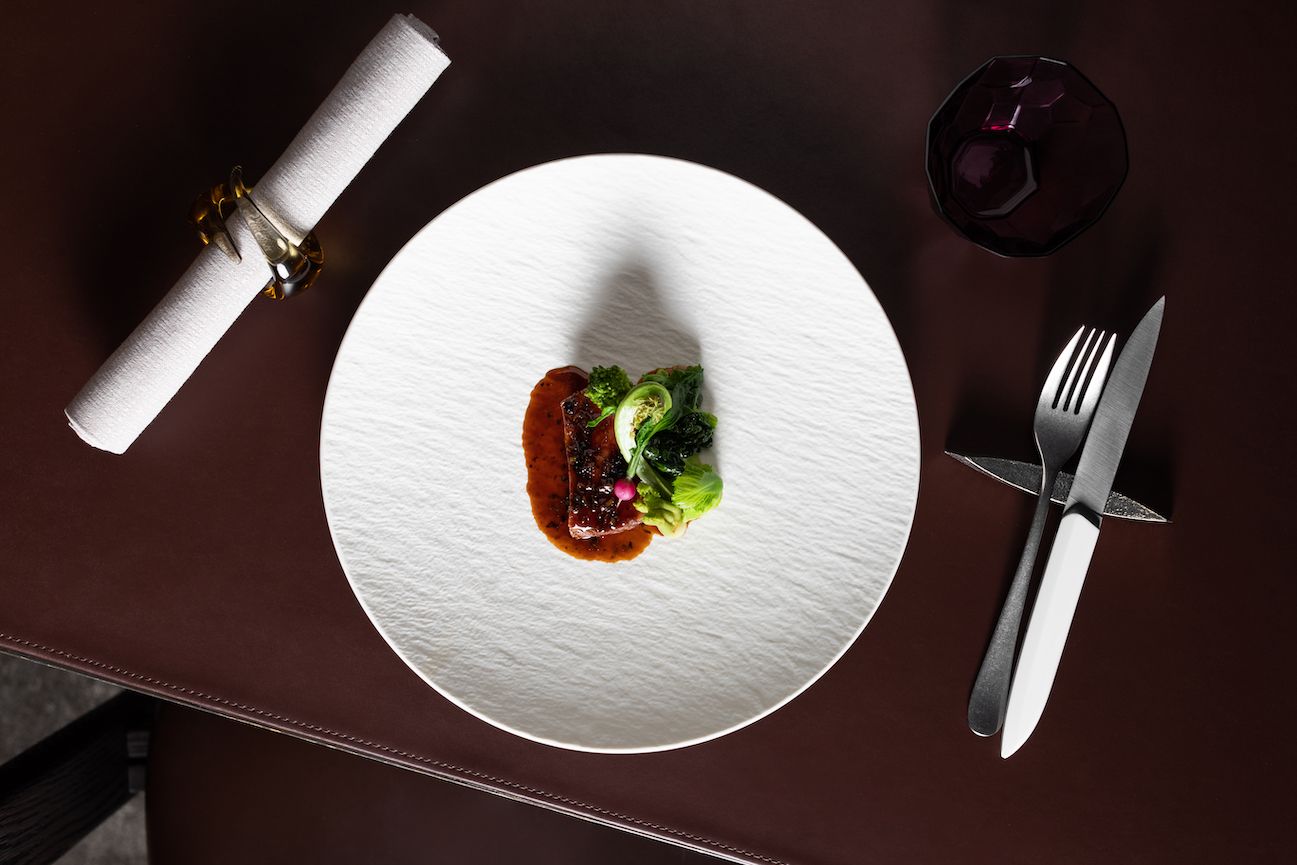
The main dish of a fusion of charcoal-grilling and Asado is called “RISAS DEL JARDÍN”(Laughter in the Garden) after his memories of enjoying Asado with his family and friends every Sunday in the garden.
“I was amazed that in Japan, even housewives who are not pro chefs take for granted their grasp of season. I too, while living in Japan, naturally gained a knowledge of season”.
Mr. Balbi’s true value is the essence of Japan that is present in all aspects of ANDO. At a glance, it appears to be a menu strong in elements of Western cuisine. However, it is composed of courses as in the order of Kaiseki cuisine, for example the rice dish being served last.
“You can enjoy without knowing the culture of Japanese cuisine, or be satisfied even more if you do know it”, says Mr. Balbi. “In fact, in all the dishes on the ANDO menu, wherever water is usually used, we use dashi”, he says, showing further attention to thoroughness by going beyond what might be expected and including secret ingredients.
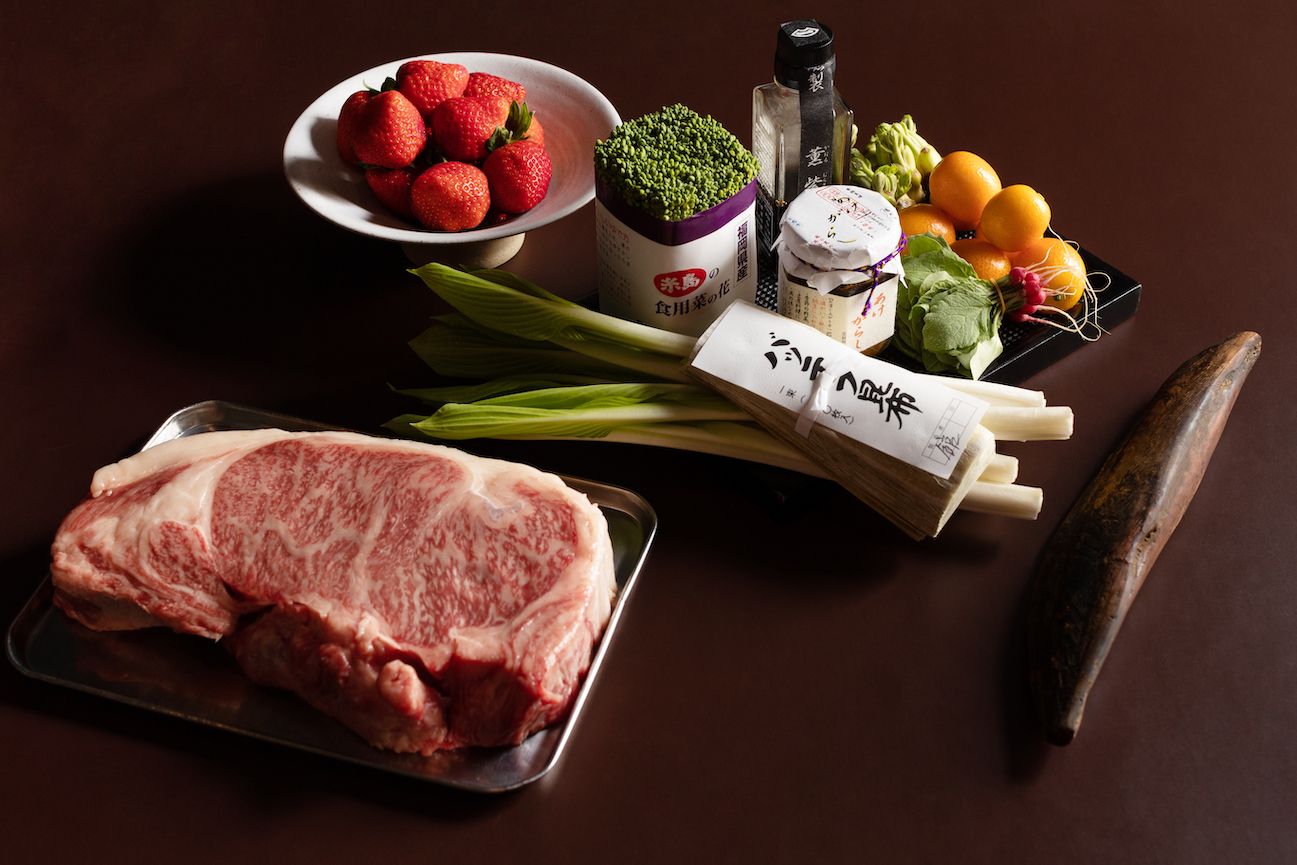
There is an established transport route for ingredients between Japan and Hong Kong; so much so that ingredients from Japan, if ordered in the morning, are delivered to his kitchen that evening. At ANDO, a shrewd supplier, based in the Fukuoka markets, is active procuring meat, fish, vegetables, fruits, dried goods, condiments, etc. - in fact all the ingredients from around Japan that give inspiration to chefs.
Of course, fish, too, Mr. Balbi’s specialty, are mainly Japan-produced. For the sashimi, an essential item on the restaurant’s menu, Mr. Balbi uses fish that he gets selected each time by a fisher in Fukuoka Prefecture whom he trusts. No sooner has the fish arrived in his kitchen, he gives it his skill, using his pride of a knife ordered from a famous Kyoto craftsperson, and given to him as a birthday present by his Japanese wife.
“The reason I have deep respect for Japan-produced ingredients is not just their high quality. From its harvest to reaching your hands, the many people involved in the one ingredient pour their love into it and handle it with care. That is clear just by looking at it. So I tell my staff that we should also handle the ingredients with gratitude. That attitude expresses itself as deliciousness in our dishes, that is for certain.
At ANDO, there is another important Japanese element, and that is the spirit of “Omotenashi (hospitality)” delivered in the service of the staff. He says he repeatedly conveys to staff the three mental attitudes of predicting and acting on the needs of customers, attending to detail, and expressing gratitude to customers.
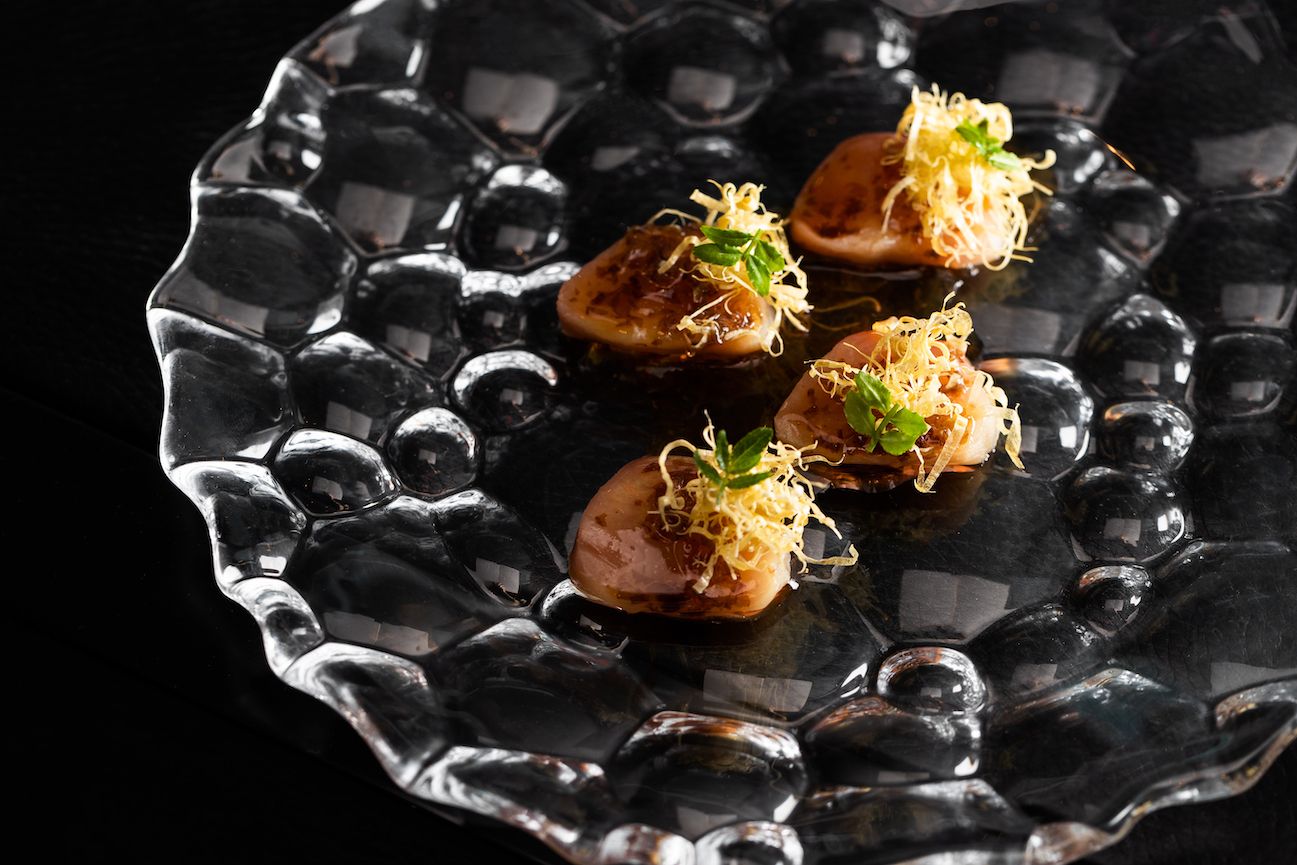
”PARTIR” (departing on a journey) is Mr. Balbi’s raw fish dish, alluding to when he departed from his hometown to learn fish cuisine. Using fish caught in Fukuoka, today’s is striped bonito. Mr. Balbi’s style is to use black olives when pickling it. Cut Battera Kombu seaweed emits a gentle fragrance of the sea, subdued by the punchy aroma of pepper leaf buds. The glass plates are chosen as an image of the sea.
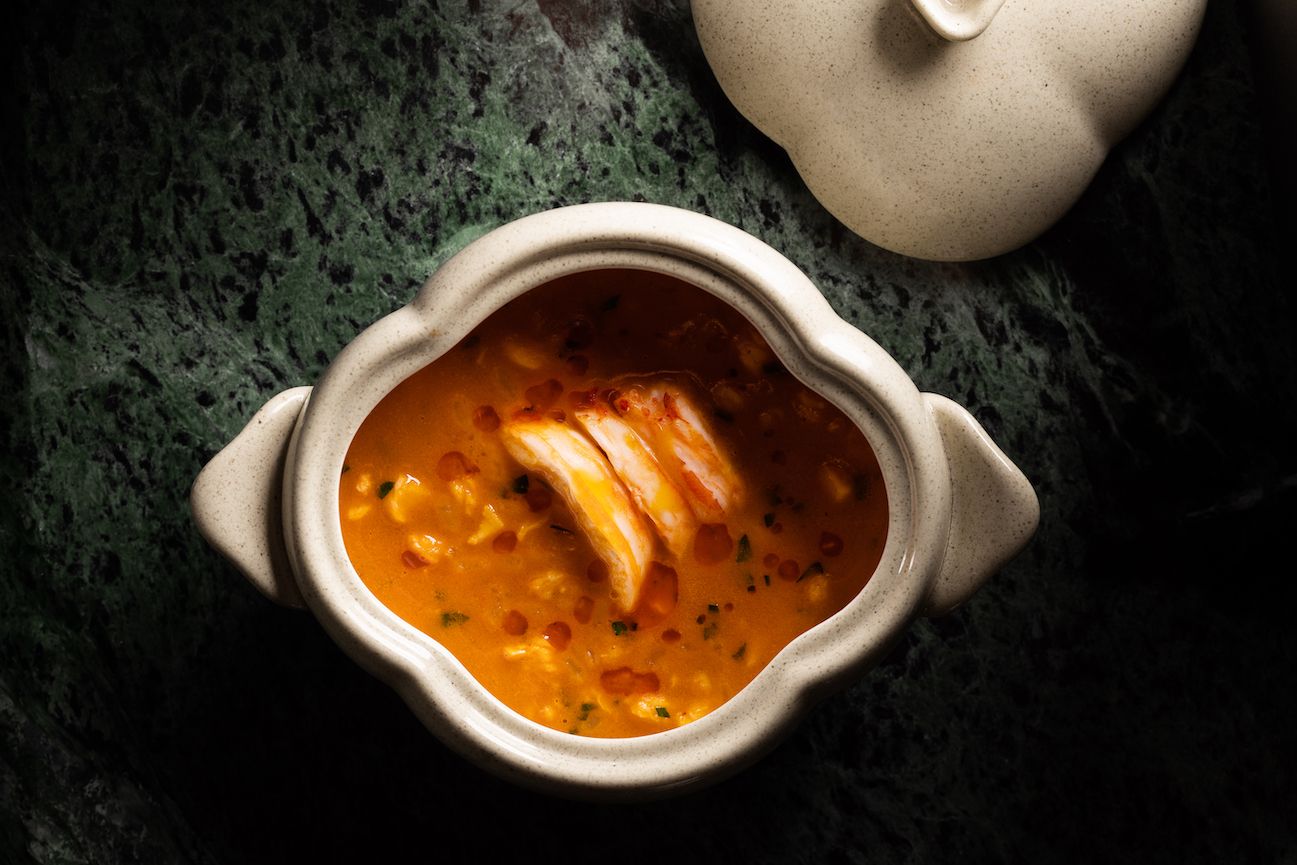
Mr. Balbi’s aim to become a chef came from the influence of his grandmother Lola, a talented cook. Since opening his restaurant, “SIN LOLA”, a risotto-style dish based on his grandmother’s flavors, is his representative dish always featured on the menu. In the current season he takes dashi from blue lobster shells and short‐necked clams, Argentinian Chistorra sausages, etc., and the rice used is Yumepirika produced in Hokkaido. Depending on season, firefly squid, abalone, yellow morel fungus, etc. are also used.
The dream of becoming a Michelin chef that he vowed in his teenage years has already come true.
“As we refine ANDO further, and in order to deepen our understanding of hospitality, now I am thinking of learning the philosophy of the tea ceremony”.
After his days of flying around the world, he has settled down and reached a stage of maturity - having said that, Mr. Balbi is still only 33, but brimming with young genius. He dared to leap into a different culture, soak up Japanese cuisine and culture, and channel it into a new interpretation in his own style using his unique sense. There is no doubt that he will continue to impact and influence chefs and gastronomists, not just in Hong Kong, but around the world.
Text: Miyako Kai Photography: What the Fox Studio




